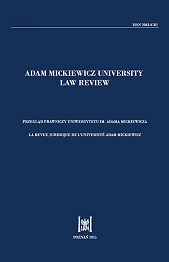The Development of the Hate Speech Regulation in Hungary: from Criminal Law to Civil Law and Media Regulation
The Development of the Hate Speech Regulation in Hungary: from Criminal Law to Civil Law and Media Regulation
Author(s): Fruzsina Gárdos-Orosz, Krisztina NagySubject(s): Media studies, Constitutional Law, Criminal Law, Civil Law
Published by: Uniwersytet im. Adama Mickiewicza w Poznaniu
Keywords: hate speech; freedom of speech; media law; discrimination; criminal law; constitutional law;
Summary/Abstract: In the Hungarian legal system, the anti-hate speech rules of media law provide an additional (administrative) proceeding for the media authority in parallel with proceedings under criminal law and civil law. The media authorities, over the past twenty years, have consistently set media law sanctions at a lower intervention threshold than criminal law did, and in many cases, they established media law violation in cases where criminal proceedings for incitement against a community were not initiated or ended in acquittal. The fundamental aim of media law regulation is to shape media content and the editing practices of media players with a view to ensure respect for human dignity, and to prevent media from becoming an ‘amplifier’ of hateful communications. In the first fourteen years of the Hungarian media regulation, the scope of interpretation concerning anti-hate speech media law restrictions developed gradually. The authority reacted not only to individual cases, and individual communications, but also carried out targeted investigations in cases that can be described as a phenomenon in the media coverage. Besides reviewing news and information programmes, it also acted against hateful contents of the entertainment programmes. The new media regulation, which entered into force in 2011, partially amended the content of the former anti-hate speech regulation: in addition to the provisions of “incitement to hatred”, the former category of “offending or prejudiced content” was replaced by the prohibition of “exclusion”. The practice of the media authority has not changed as regards the assessment of the media law standard, as the authority has continued to apply it differently from the criminal law standard, considering it as a lower intervention threshold. However, in comparison with pre-2010 practice, the authority initiated considerably fewer proceedings and its approach in terms of law enforcement became less characterised by adjudicating problems that can be described as phenomenon in the media coverage, no targeted proceedings of this kind were initiated. Its practice can be characterised by a couple of high profile cases with extreme sanctions, which attract great attention. These cases are important as they designate the boundaries of public communications, but in this way, media law measures are not really suitable for making any substantial changes to the characteristics of the media coverage.
Journal: Przegląd Prawniczy Uniwersytetu im. Adama Mickiewicza
- Issue Year: 2018
- Issue No: 8
- Page Range: 11-34
- Page Count: 26
- Language: English

